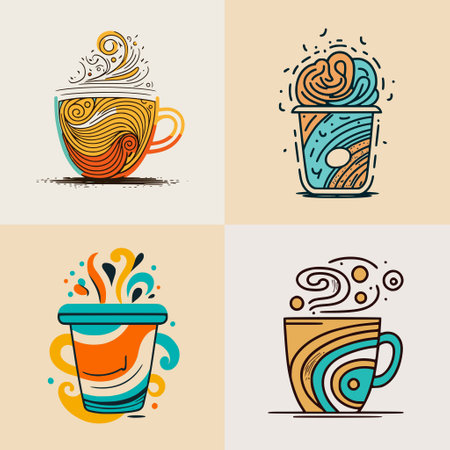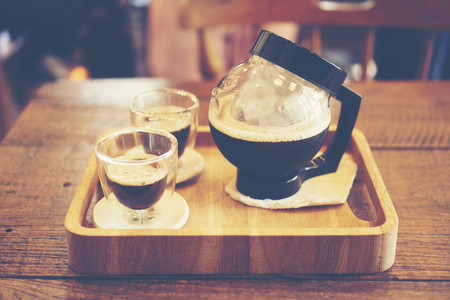1. Introduction: Coffee Meets Indian Artistry
India, a land celebrated for its vibrant tapestry of traditions, colours, and crafts, has always woven artistry into daily life. In recent years, the country’s coffee culture has bloomed alongside its ever-evolving café scene, especially in cosmopolitan cities like Bengaluru, Mumbai, and Delhi as well as in traditional coffee-growing regions such as Coorg and Chikmagalur. This dynamic growth is not just about sipping a cup of filter kaapi or artisanal espresso; it’s about experiencing coffee as an expression of India’s rich artisan heritage. From the intricate kolam patterns welcoming guests at a Tamil Nadu café entrance to hand-painted terracotta cups echoing Rajasthan’s pottery legacy, Indian artisans are infusing time-honoured art forms into coffee presentation. The result is a unique blend where every cup tells a story—of regional identity, generational craftsmanship, and the ongoing dialogue between the past and present. This synergy celebrates both the sensory pleasure of coffee and the enduring spirit of Indian creativity.
2. A Tapestry of Traditions: Indian Art Forms in Café Spaces
Stepping into a modern Indian café, one is often greeted by the vibrant interplay of heritage and contemporary sensibilities. The country’s rich tapestry of traditional art forms—such as Madhubani, Warli, and Kalamkari—has found new life as artisans ingeniously adapt these visual languages to enhance café interiors and coffeeware. These arts, once confined to the walls of rural homes or sacred textiles, now create immersive atmospheres where every coffee experience becomes a cultural journey.
Madhubani: Storytelling Through Symmetry
Originating from Bihar, Madhubani painting is known for its intricate geometrical patterns and mythological motifs. In the context of cafés, artisans use Madhubani to embellish tabletops, menu boards, and even ceramic cups with nature-inspired designs. This not only adds a splash of colour but also invokes a sense of nostalgia among patrons familiar with its folk tales.
Warli: Minimalism Meets Modernity
The Warli tribe from Maharashtra has long used simple white-on-mud depictions to narrate community stories. Today, Warli finds its place on coffee trays and wall murals, where its minimalist stick figures dancing or brewing local filter coffee bridge the gap between rustic tradition and urban chic.
Kalamkari: Hand-Painted Elegance
Kalamkari—a delicate art from Andhra Pradesh—uses natural dyes and fine brushwork to create elaborate floral patterns and epics on fabric. In café settings, table runners, cushion covers, and even lamp shades adorned with Kalamkari artistry elevate the ambiance with their earthy tones and intricate details.
Traditional Art Forms in Café Presentation
| Art Form | Origin State | Common Café Application |
|---|---|---|
| Madhubani | Bihar | Ceramic mugs, menus, wall panels |
| Warli | Maharashtra | Trays, murals, coasters |
| Kalamkari | Andhra Pradesh/Telangana | Table linens, lamp shades, aprons |
Cultural Resonance in Everyday Coffee Rituals
The infusion of these art forms into café spaces does more than just beautify—it celebrates India’s living heritage. Each motif or pattern serves as a subtle storyteller, connecting urban coffee lovers with ancestral wisdom and local identity. As a result, the act of sipping coffee transforms into an experience steeped in regional pride and artistic appreciation.

3. Crafting the Experience: Handmade Coffee Utensils and Ceramics
In India, the coffee experience is deeply intertwined with artisanal craftsmanship, where every element—from the vessel to the tray—reflects centuries-old traditions. Indian artisans elevate coffee presentation by using hand-thrown pottery, echoing the rustic charm of rural studios in places like Khurja and Jaipur. These earthen cups, often glazed in earthy tones or adorned with hand-painted motifs such as paisleys and peacocks, capture the warmth and authenticity of Indian craft culture.
Brass and copper utensils play an equally significant role. The use of lotas, davras, and traditional filter kaapi tumblers not only nods to South Indian coffee heritage but also brings a tactile sense of nostalgia to every pour. These metals, revered for their health benefits and intricate engravings, are shaped by generational artisans who infuse each item with local symbolism—from floral borders inspired by temple architecture to geometric patterns reminiscent of Mughal artistry.
The integration of these locally-inspired motifs goes beyond aesthetics; it’s a celebration of regional identity. Whether serving single-origin beans from Coorg in terracotta mugs etched with tribal designs or presenting frothy filter coffee in hammered brassware on handwoven coasters, Indian artisans ensure that every detail resonates with the nation’s diverse artistic legacy. Through this thoughtful presentation, the act of drinking coffee becomes a multisensory homage to India’s vibrant craft traditions.
4. From Serving to Storytelling: Artisans at Work
When you sip a cup of coffee in India, it is often much more than a drink; it is an experience woven with stories, textures, and tradition. Indian artisans—potters, painters, and weavers—bring their age-old craft into every aspect of coffee presentation, turning each serving into a narrative. The creative process begins long before the coffee reaches the table, as these makers infuse their wares with motifs that reflect local heritage and everyday life.
Potters: Shaping Heritage
Indian potters, or kumhars, handcraft terracotta cups known as kulhads, which are commonly used for serving filter coffee in South India and chai across the country. Their process involves selecting the right clay, shaping it on the wheel, and firing it using traditional kilns. Many potters embed regional symbols or geometric patterns that signify prosperity, unity, or connection to the land. For example:
| Region | Motif/Design | Meaning |
|---|---|---|
| Tamil Nadu | Kolam patterns | Auspiciousness & harmony |
| Bengal | Terracotta floral reliefs | Fertility & beauty of nature |
| Rajasthan | Paisley & peacock shapes | Pride & cultural identity |
Painters: Crafting Visual Narratives
Ceramic painters from Jaipur or muralists from Kerala add vibrant hand-painted designs to mugs and trays. They draw upon folk tales, mythological scenes, and nature-inspired imagery to create objects that spark conversation. These visuals are not only decorative but also serve as subtle reminders of shared values such as hospitality (atithi devo bhava: ‘the guest is god’) and community bonding.
Weavers: Weaving Context into Coffee Culture
The textiles used in coffee service—table runners, coasters, or napkins—are often handwoven by artisans from regions like Kutch or Assam. Through patterns like ikat or kantha embroidery, weavers tell stories of migration, harvest seasons, or local festivals. Each thread signifies collective memory and belonging.
Embedded Stories: Artisans Voices
Savitri Devi (Potter from Varanasi): “Every kulhad I make carries my village’s story—the river Ganga’s flow inspires my wave patterns.”
Anil Kumar (Painter from Jaipur): “I paint lotuses on cups because they symbolise purity. When people drink coffee from them, I hope they feel peace.”
Lalita Boro (Weaver from Assam): “The red threads in my coasters represent our Bihu festival—it brings families together over food and laughter.”
The Transformative Power of Tradition
Through these layered creative processes, Indian artisans elevate coffee presentation into a living tapestry of history and personal expression. Every piece used in service becomes a bridge between past and present—a story held in your hands with every sip.
5. Cultural Resonance: Why Traditional Art Elevates Coffee Moments
In India, the enjoyment of coffee extends beyond the beverage itself; it is deeply intertwined with cultural identity and emotional experience. When Indian artisans integrate traditional art forms—such as intricate Warli motifs, Madhubani patterns, or the vibrant hues of Kalamkari—into coffee presentation, they are not merely decorating cups or trays. They are infusing each sip with a sense of heritage and belonging. This artistic embellishment transforms an everyday act into a celebration of legacy, echoing the stories and values embedded in India’s rich craft traditions.
The use of handcrafted elements in serving coffee, be it terracotta cups adorned with regional designs or handwoven coasters inspired by tribal art, creates an atmosphere that resonates with nostalgia and pride. For many Indians, these visual cues evoke memories of family gatherings, village festivals, and the warmth of home. The tactile feel of hand-painted ceramics or the subtle fragrance of natural dyes can spark a connection to ancestral roots, making every coffee moment more intimate and meaningful.
Moreover, this blending of art and ritual bridges generations. Young people sipping filter coffee from a mug painted in Pattachitra style not only enjoy a modern beverage but also participate in preserving age-old crafts. This cultural synergy fosters respect for traditional artisanship while celebrating contemporary tastes—a unique fusion that is distinctly Indian. Ultimately, when coffee is presented through the lens of traditional craft, it elevates both the drink and the occasion, transforming simple hospitality into a powerful expression of identity and shared history.
6. Rooted in Heritage, Brewing the Future
As Indian artisans continue to weave traditional art into coffee presentation, they are doing much more than creating visually stunning experiences. This harmonious integration of heritage and contemporary café culture is a powerful act of cultural preservation, ensuring that ancient motifs, techniques, and philosophies remain relevant amidst rapidly changing urban landscapes. Every Warli-inspired tray or Madhubani-embellished cup is not just an object; it is a living narrative of India’s diverse artistic legacy, brought alive at every sip and every shared conversation over coffee.
These artisanal practices also foster a sense of pride among both creators and consumers. Young baristas collaborating with rural craftsmen, or urban cafés sourcing hand-painted serveware from local potters, demonstrate how Indias coffee culture is becoming deeply rooted in its own soil rather than merely imitating global trends. The result is a uniquely Indian café experience—where the sensory delight of freshly brewed filter kaapi meets the visual richness of Kalamkari patterns or the earthy touch of terracotta.
Such collaborations support sustainable livelihoods for artisan communities and introduce new generations to the stories behind their craft. By elevating traditional artistry within a modern context, artisans are not only safeguarding their skills but also inspiring innovation that resonates with today’s youth. Coffee drinkers are encouraged to look beyond the beverage itself and appreciate the intricate handiwork that frames their daily rituals.
This evolving relationship between art and coffee reflects India’s long-standing ability to absorb global influences while staying anchored to its roots. As more cafés across Bengaluru, Mumbai, or Kolkata embrace indigenous design elements—from brass tumblers reminiscent of ancestral kitchens to murals echoing folk tales—the stage is set for an authentic Indian coffee culture that celebrates both heritage and creativity.
Ultimately, these artisanal integrations do more than beautify spaces; they cultivate community, sustain tradition, and set the foundation for an evolving identity in the global coffee scene. With each handcrafted detail, Indian artisans are brewing a future where heritage is not only preserved but thrives—ensuring that every cup tells a story that belongs uniquely to India.


